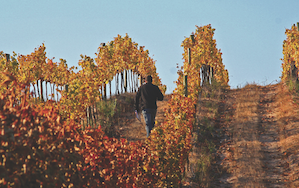Commercial director Christian Wylie, says: “We need to educate all over the world that our wines are top quality. In many countries when consumers need to buy a US$20 bottle or more, they go straight to the French shelf. Many Chilean wines have been well ranked with good accolades and scores. We need more. We need to innovate.”
It sounds doom and gloom in the long thin country on the lower western side of South America. But not so. Concha y Toro is the continent’s largest wine producer. It is opening an office in Shanghai this year to complement the one it opened in Singapore in 2010.
Corporate export director Thomas Domeyko says: “This move illustrates the potential we are seeing in Asia for Chilean wine, a market which in 2012 proved to be the most dynamic, led by rising consumption and new consumers. Growth was led by China, Japan, Korea and Singapore, among others. Also we are seeing opportunities in other emerging countries such as Brazil, Russia and some markets in Africa, although these are still small.
“For Concha y Toro the UK market is relevant for the development of the premium category. The company continues investing, with particular focus on Casillero del Diablo. A new in-market merchandising team significantly improved distribution and positioning of the brand in retail outlets, resulting in sales growth of 12% in 2012. Casillero del Diablo also broke through the one million case mark and entered the top 20 branded league table for the first time,” he says.
“The US market is also important for the company – the US is the largest market for Chilean wine exports, above US$40 per case FOB (free on board). Currently, our sales and marketing strategy is focused on improving the mix. The company has seen significant results and large opportunities in the most profitable segments of the market. The group has strengthened its position in the US market through its acquisition of Fetzer and the development of a separate and dedicated sales force,” says Domeyko.
Different spin
Héctor Torres, director of Luxury Wines, Santa Rita Estates, has a different spin on the US. “Many Chilean wineries were forced to increase prices during 2011 and 2012, which affected the entire portfolio, but primarily the entry label wines, the ones sold below US$6.99 retail. Simultaneously, California had a bad vintage in volume during 2011, so they substantially increased imports from Chile during 2012, which were sold under domestic brands such as Corbett Canyon or Cupcake.
“During 2012 an important switch occurred at the Chilean entry level from bottled wines in Chile to Chilean wines bottled in the US. The same happens for Argentinean wines, which increased their sales of bulk wines but decreased in bottled exports,” he says.
“The surviving Chilean brands up to $7.99 are the larger and better recognised, eg Concha y Toro Frontera, Santa Rita 120 and San Pedro Gato, plus the domestic brands with Chilean wines bottled in the US as mentioned. Therefore, the Chilean wine industry has focused its promotional efforts during 2012 in the US$10-$20 retail, which is a segment where the entire wine industry is presenting the strongest growth, with rates of 10% between $10 and $ 11.99 retail,” says Torres.




